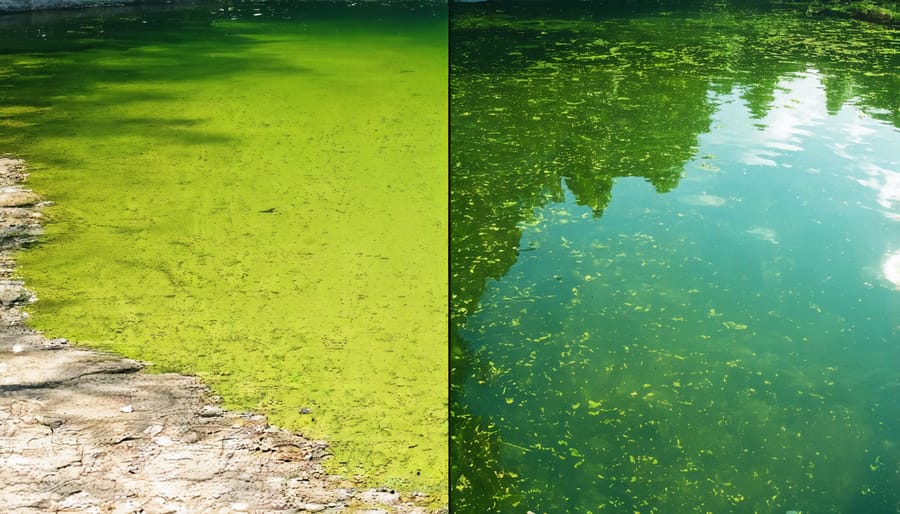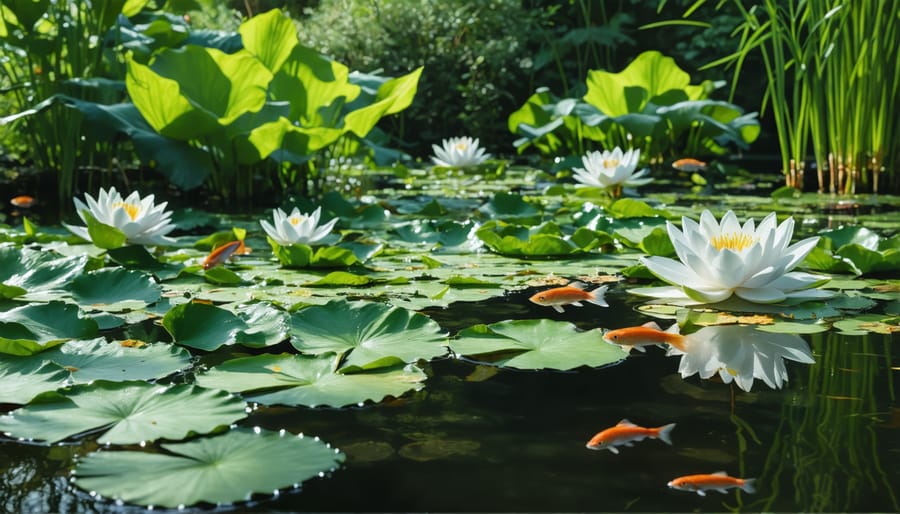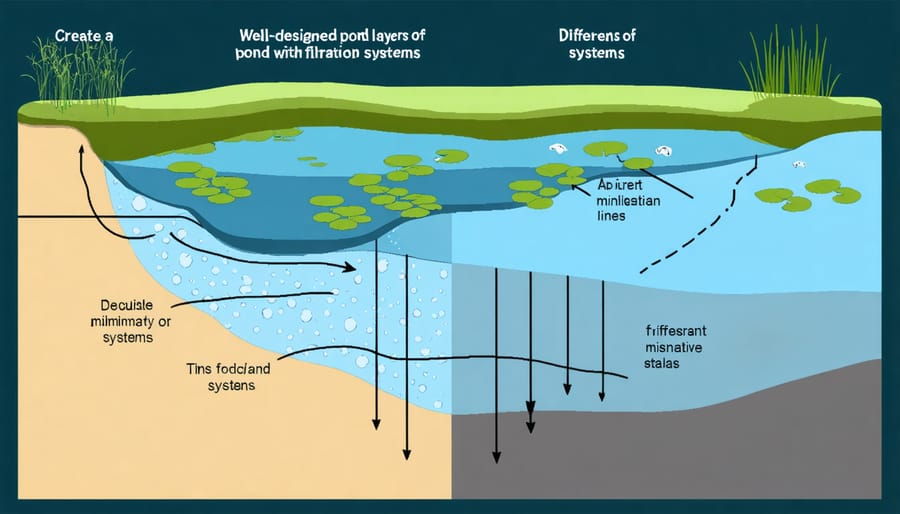
Keep Your Pond Naturally Clear: Smart Solutions for Year-Round Algae Control
The world’s oceans are reaching a critical tipping point, with over 8 million tons of plastic entering marine ecosystems annually and nearly 90% of global fish stocks either fully exploited or overfished. Yet beneath these sobering statistics lies an extraordinary opportunity for transformation. Ocean sustainability isn’t just about preserving our waters—it’s about reimagining our relationship with Earth’s most vital resource.
From innovative plastic-capture technologies to community-led coral reef restoration projects, coastal communities worldwide are pioneering solutions that prove we can balance human needs with ocean health. Small-scale fisheries are adopting sustainable practices that not only protect marine life but also enhance their catches and economic stability. Meanwhile, breakthrough developments in renewable ocean energy and sustainable aquaculture are demonstrating how our seas can help solve global challenges while regenerating marine ecosystems.
As we face unprecedented environmental challenges, ocean sustainability represents our best chance at securing both planetary health and human prosperity. By embracing science-backed solutions and traditional ecological knowledge, we’re discovering that protecting our oceans isn’t just an environmental imperative—it’s a pathway to creating resilient, thriving communities and economies for generations to come.

Understanding Seasonal Pond Challenges
Spring Wake-Up
As spring temperatures rise, your pond awakens from its winter slumber, bringing both challenges and opportunities for maintaining ocean sustainability. Early algae blooms are common during this transition period, but implementing effective seasonal algae control methods can help keep your water crystal clear.
Start by gently removing any debris that accumulated over winter, being careful not to disturb the beneficial bacteria that have established themselves. Watch for signs of emerging pests like mosquito larvae and water mites, which become active as temperatures climb. Natural solutions like adding floating plants can provide shade and reduce algae growth while creating hiding spots for beneficial insects that help control pest populations.
Consider introducing barley straw early in the season – it releases natural compounds that inhibit algae growth as it decomposes. Monitor water temperature regularly, as sudden warming can trigger aggressive algae blooms. A balanced approach to feeding fish during this time is crucial; start with small amounts to prevent excess nutrients from fueling unwanted algae growth.
Remember, a healthy spring wake-up sets the foundation for a sustainable pond ecosystem throughout the warmer months ahead.
Summer Balance
Summer brings peak algae growth periods, making it crucial to maintain proper water balance in your ocean-friendly environment. As temperatures rise and sunlight intensifies, algae can quickly multiply, potentially disrupting the delicate ecosystem. To maintain clear water naturally, start by introducing beneficial aquatic plants that compete with algae for nutrients. Water lilies, lotus, and submerged plants like hornwort are excellent choices.
Regular water testing becomes especially important during summer months. Monitor pH levels, ammonia, and nitrates weekly, adjusting as needed with natural solutions. Consider adding barley straw, which releases compounds that inhibit algae growth as it decomposes. UV clarifiers can also help control algae without harmful chemicals.
Maintain proper water circulation through strategically placed pumps and waterfalls. This movement not only helps distribute oxygen throughout the water but also prevents stagnant areas where algae tend to flourish. Remember to clean filters more frequently during summer, as debris accumulation increases with higher biological activity. A balanced approach combining these methods will help keep your water clear while supporting a healthy ecosystem.
Natural Control Methods That Work
Beneficial Plants
One of the most effective natural strategies for maintaining healthy water ecosystems is incorporating beneficial aquatic plants. These plants work as nature’s own filtration system, competing with problematic algae for essential nutrients like nitrogen and phosphorus. Through proper aquatic plant management, you can create a balanced ecosystem that naturally controls algae growth.
Water lilies, for example, provide excellent surface coverage, limiting sunlight penetration that algae need to thrive. Submerged plants like hornwort and anacharis are particularly effective at absorbing excess nutrients directly from the water column. These underwater warriors help maintain crystal-clear conditions while adding visual interest to your water feature.
Marginal plants such as iris and rushes not only look beautiful along the edges but also play a crucial role in removing pollutants. Their extensive root systems create natural barriers that trap debris and filter water before it enters the main body of your pond.
To maximize effectiveness, aim for a mix of different plant types. A good rule of thumb is to cover about 60% of your water surface with a combination of floating and submerged plants. This creates a natural balance that keeps algae in check while maintaining healthy oxygen levels for fish and other aquatic life.

Biological Solutions
Nature has provided us with powerful allies in the fight for ocean sustainability through biological solutions. Beneficial bacteria play a crucial role in maintaining healthy marine ecosystems by breaking down organic waste and reducing harmful nutrient levels. These microscopic helpers work tirelessly to process excess nitrogen and phosphorus, preventing algal blooms that can devastate marine life.
Natural predators are equally important in maintaining ecological balance. For instance, introducing native fish species that feed on invasive organisms can help control unwanted populations without harmful chemicals. Sea urchins and certain species of fish act as natural cleaners, preventing the overgrowth of algae on coral reefs and maintaining these delicate ecosystems.
Shellfish, particularly oysters and mussels, serve as natural water filtration systems. A single oyster can filter up to 50 gallons of water per day, removing excess nutrients and improving water clarity. Creating and protecting shellfish beds not only helps clean our oceans but also provides essential habitat for other marine species.
Seaweed and kelp forests are another biological solution gaining attention. These marine plants absorb excess carbon dioxide and nutrients while providing shelter for countless marine species. Encouraging the growth of these underwater forests through protection and restoration projects helps maintain water quality and supports biodiversity.
These natural solutions demonstrate how working with nature, rather than against it, can create sustainable improvements in ocean health.
Physical Controls
Physical control methods offer effective and sustainable solutions for maintaining ocean health. UV clarifiers, which use ultraviolet light to eliminate harmful microorganisms, play a crucial role in water treatment facilities and aquaculture systems. These devices work by disrupting the DNA of potentially harmful organisms, preventing them from reproducing and maintaining cleaner water conditions.
Mechanical filtration systems serve as another vital component in ocean sustainability efforts. These systems use various screening methods to remove solid waste, debris, and pollutants from water bodies. Common applications include specialized nets and barriers that catch plastic waste before it enters ocean currents, and advanced filtration systems in coastal areas that process water before it returns to the ocean.
Sustainable physical controls also include innovative technologies like bubble curtains, which create barriers of air bubbles to contain oil spills and prevent their spread. Similarly, floating booms help contain and collect surface pollutants, while allowing marine life to pass safely underneath.
Ocean cleanup vessels equipped with conveyor systems represent another physical approach to sustainability. These specially designed ships can collect tons of floating debris while minimizing impact on marine ecosystems. When combined with shoreline cleanup efforts and strategically placed debris traps in river mouths, these methods significantly reduce ocean pollution without relying on chemical treatments or harmful interventions.
Prevention Is Better Than Cure
Water Quality Management
Water quality is the cornerstone of ocean health, requiring careful monitoring and management of various parameters. Maintaining optimal water conditions involves balancing key factors like pH levels, dissolved oxygen, salinity, and nutrient concentrations.
Ocean ecosystems rely on specific nutrient levels to support marine life. Too much or too little can disrupt the delicate balance, leading to problems like algal blooms or dead zones. Regular testing and monitoring help identify potential issues before they become serious threats to marine life.
Several natural and human-made factors can affect water quality. Runoff from coastal areas, industrial discharge, and agricultural activities introduce excess nutrients and pollutants into ocean waters. Climate change also impacts water parameters by altering temperature patterns and ocean chemistry through acidification.
To protect ocean water quality, various management strategies are employed. These include:
– Installing water treatment systems near coastal discharge points
– Creating buffer zones between agricultural lands and water bodies
– Implementing strict regulations on industrial waste disposal
– Monitoring and controlling urban runoff
– Establishing protected marine areas
Community involvement plays a crucial role in water quality management. Local initiatives like beach cleanups, responsible fishing practices, and reduced use of harmful chemicals in everyday activities contribute significantly to maintaining healthy ocean waters. Regular water quality assessments help track progress and adjust management strategies as needed.
Smart Design Choices
Creating a pond that naturally resists algae and pest problems starts with smart design choices. The key is to mimic nature’s own balance. Begin by ensuring your pond has varying depths, with at least one area reaching 24 inches deep. This deeper zone provides fish with a cool retreat during summer and helps stabilize water temperatures.
Include shelves at different levels around the pond’s perimeter. These graduated depths allow you to grow a diverse range of aquatic plants, which compete with algae for nutrients. Aim to cover about 60% of your pond’s surface with plants – including floating varieties like water lilies and submerged oxygenators.
Proper circulation is crucial. Install your pump and filter system to create gentle movement across the entire pond, eliminating stagnant areas where mosquitoes might breed. Position the skimmer and waterfall on opposite ends to maximize flow. This natural movement also helps distribute oxygen throughout the water.
Consider adding rocks and gravel to the bottom and sides of your pond. These materials provide surface area for beneficial bacteria to colonize, creating a natural filtration system. They also offer hiding spots for fish and create microhabitats for helpful aquatic insects that keep pest populations in check.
Remember to include shallow areas with emergent plants – they attract natural predators like dragonflies that help control mosquito populations while adding beauty to your water garden.

Emergency Response Plan
When facing sudden ecological challenges in your pond, having a well-prepared emergency response plan is crucial for maintaining healthy water conditions. Quick action combined with careful consideration of the ecosystem’s balance can help prevent minor issues from becoming major problems.
For algae blooms, the first step is to identify the type and extent of the problem. Start by testing your water parameters immediately, focusing on pH, ammonia, and phosphate levels. If you notice a sudden green tint or floating algae mats, reduce feeding temporarily and consider adding beneficial bacteria products that compete with algae for nutrients.
Natural solutions like barley straw extract can provide quick relief without harsh chemicals. For immediate action, you can also manually remove visible algae using a fine net, being careful not to disturb beneficial plants and fish. Installing an emergency air pump can quickly increase oxygen levels during blooms, which is essential for fish health.
When dealing with pest invasions, identification is key to choosing the right response. For example, if you spot an unusual number of mosquito larvae, adding mosquito fish or installing a surface agitator can provide rapid control. For year-round pest management, maintain a stock of beneficial insects and natural predators that can quickly respond to population explosions of harmful species.
Keep an emergency kit ready with essential items like activated carbon (to remove toxins), extra air stones, water test kits, and natural bacterial treatments. Document any emergency responses you implement, noting what works best for your specific situation. This information becomes invaluable for preventing future issues and refining your response strategy.
Remember to monitor your pond closely for at least a week after implementing any emergency measures, ensuring that your solution hasn’t created new problems. If conditions don’t improve within 48 hours, consider consulting a pond specialist for additional guidance.
In conclusion, the health of our oceans is intrinsically linked to the survival and prosperity of our planet. Throughout this discussion, we’ve explored the critical challenges facing our marine ecosystems and the practical solutions available to protect them. From reducing plastic pollution and implementing sustainable fishing practices to protecting marine habitats and supporting ocean conservation initiatives, every action counts.
The key to successful ocean sustainability lies in consistent, long-term management practices that balance human needs with environmental protection. By adopting sustainable fishing quotas, establishing marine protected areas, and reducing our carbon footprint, we can help preserve ocean biodiversity for future generations. Remember that small changes in our daily lives, such as choosing sustainable seafood options and reducing single-use plastics, can create significant positive impacts when practiced collectively.
Education and awareness remain crucial components in ocean conservation efforts. By staying informed and sharing knowledge about ocean sustainability, we can inspire others to join in protecting these vital ecosystems. The future of our oceans depends on the actions we take today, making it essential for individuals, communities, and governments to work together in implementing and maintaining sustainable ocean management practices.
Let’s commit to being responsible stewards of our oceans, ensuring their health and vitality for generations to come. After all, healthy oceans mean a healthy planet, and that’s something worth fighting for.
